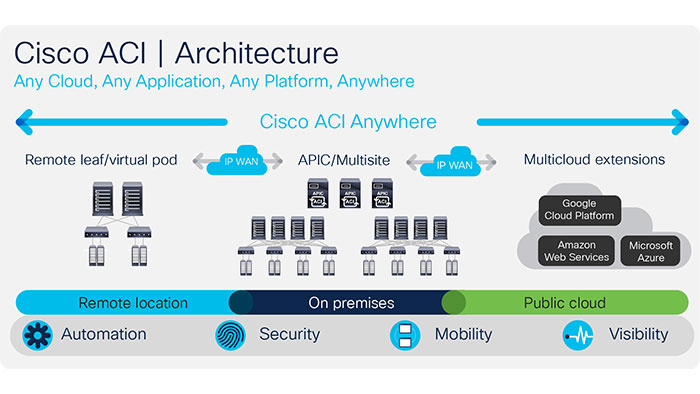
Nowadays, we are facing an unprecedented growth in mobile and Internet traffic because of social media on-demand videos and other online applications. This is putting a heavy burden on the data centers of telecom operators to provide fast and consistent voice plus data experience for the subscribers.
Additionally, today there’s a paradigm shift happening in the mobile technology from 4G to 5g which is promising to bring high quality of service and faster speeds not only for mobile subscribers but also for vertical markets like IOT. Also, with the 5G technology mobile operators are increasingly thinking of a data center architecture which is distributed towards the edge is career grid ready and provides the agility needed to operate large networks. So, what are the benefits of Cisco ACI?
Cisco’s application centric infrastructure (ACI) is ideally suited for the distributed 5g architecture. ACI network is 5G ready which fundamentally brings the capabilities of centralized provisioning and policy management built-in security with a whitelist for hardware-based encryption, telemetry an intelligent dashboard and an assurance engine that continuously verifies and validates the entire data center network.
One of the key challenges with a distributed 5G data center is managing a data center fabric spread across many sites and ensuring communication between sites is working optimally. What are the benefits of ACI in the data center?
With Cisco’s ACI remote lift, capability operators can extend a pair of switches to a remote site and managing them from the same controller managing that central and regional data center fabric. Another benefit of this approach is the ability to deploy with zero touch provisioning and reducing deployment time by 75%. Another aspect of the 5G stack is that the workloads and services require complex traffic steering to provide user traffic optimization.
ACI simplifies the provisioning and operations of this with ACI service graph features, both physical and virtual network functions are now integrated in the fabric deployments or seamless service chaining. Now GI LAN services can be and orchestrated within the data center or distributed across data center domains.
ACI is also carrier-grade ready providing features like GTP based hashing or integrated load balancing and high availability with convergence time tested in milliseconds. Finally, customers can benefit from Cisco ACI telemetry to collect information about the user experience with the controller.
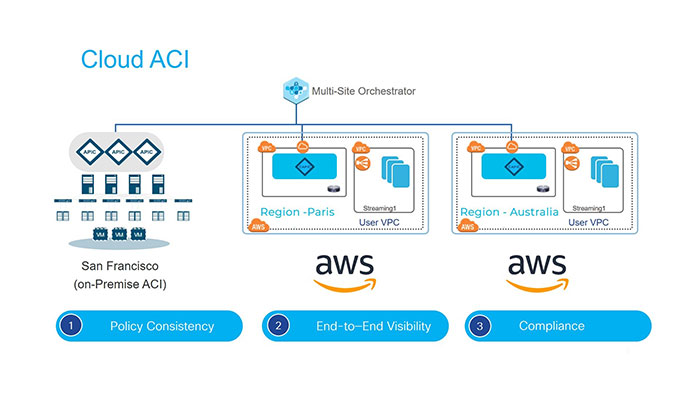
Cisco ACI in the 5G data center enables multi-site automation providing 75% reduction in time to deploy switching capacity for 5G workloads. Also, it brings reliability and simplification with set up complex traffic operations and ensure traffic is flowing optimally even as workloads and services are added or removed.
Cisco ACI provides single point of management with visibility into events workload placements and health of all data center fabric functions.
To know about Implementing Cisco Application Centric Infrastructure, ACI architecture is built with the following building blocks:
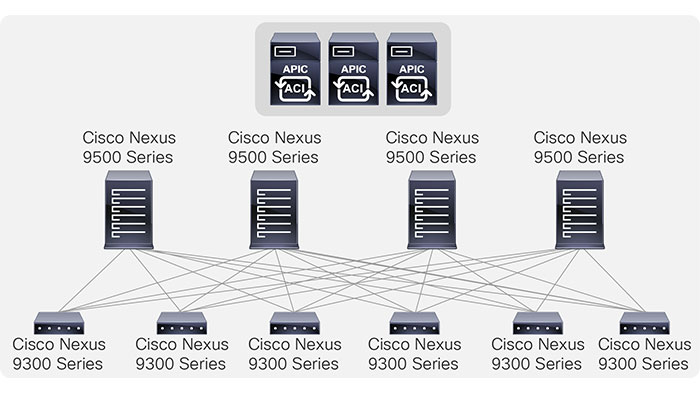
Cisco APIC is the creation, repository, and enforcement point for ACI application policies, which you can set based on application-specific network requirements. Cisco APIC also provides policy authority and resolution mechanisms. Cisco ACI policies define connectivity, security, and networking requirements for agile and scalable application deployments.
Cisco ACI architecture enables the following features in the network:
Customers can benefit the leaf-and-spine architecture to enable ACI features within their data centers.
The APIC GUI is a browser-based graphical interface for configuring and monitoring the ACI architecture. The GUI is organized to provide hierarchical navigation to all components, logical and physical, of the overall system.
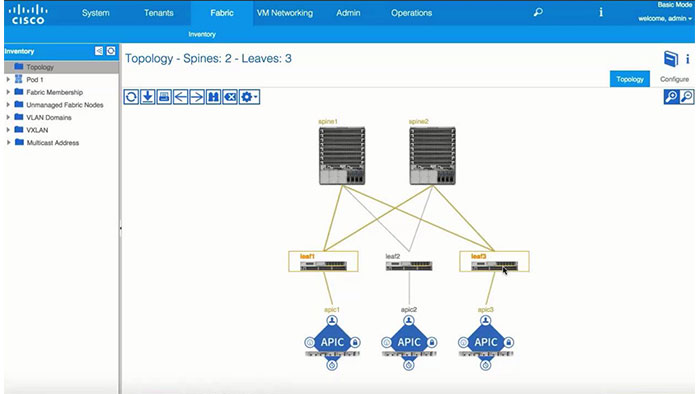
ACI consists of the following architectural solutions:
As a part of Cisco ACI architecture, the following components can be deployed:
Cisco Network Insights – Resources (NIR) is an extension of the administrator’s brain to prevent failure in the network or focus attention on remedial steps to recover faster when failures do occur. NIR highlights unexpected occurrences in the network and helps network administrators with capacity planning, compliancy with audits, and keeping track of infrastructure uptime.
Cisco Network Insights Advisor (NIA) provides proactive advisories for software and hardware recommendations, field notices, visibility into known defects, etc., keeping the network up to date, minimizing outages through proactive defect and security advisories, and allowing significant OpEx savings.
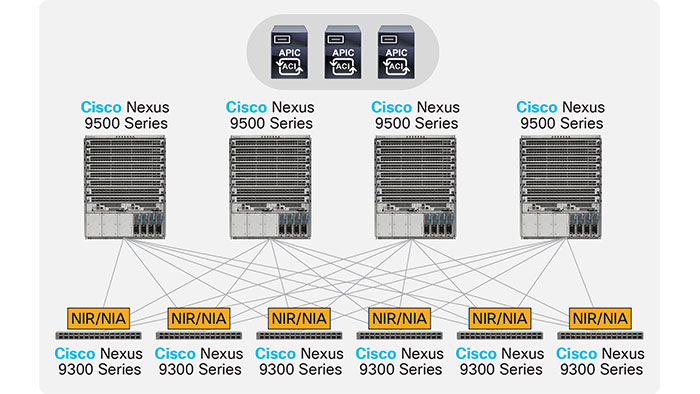
With ACI Advantage and Essential subscriptions for data center networking, the following features would be enabled:
Enabling ACI features can be achieved using one PLR license. By applying Cisco PLR ACI licensing within Cisco APIC dashboard, all ACI basic features and Security features would be activated on Nexus leaves and spines.